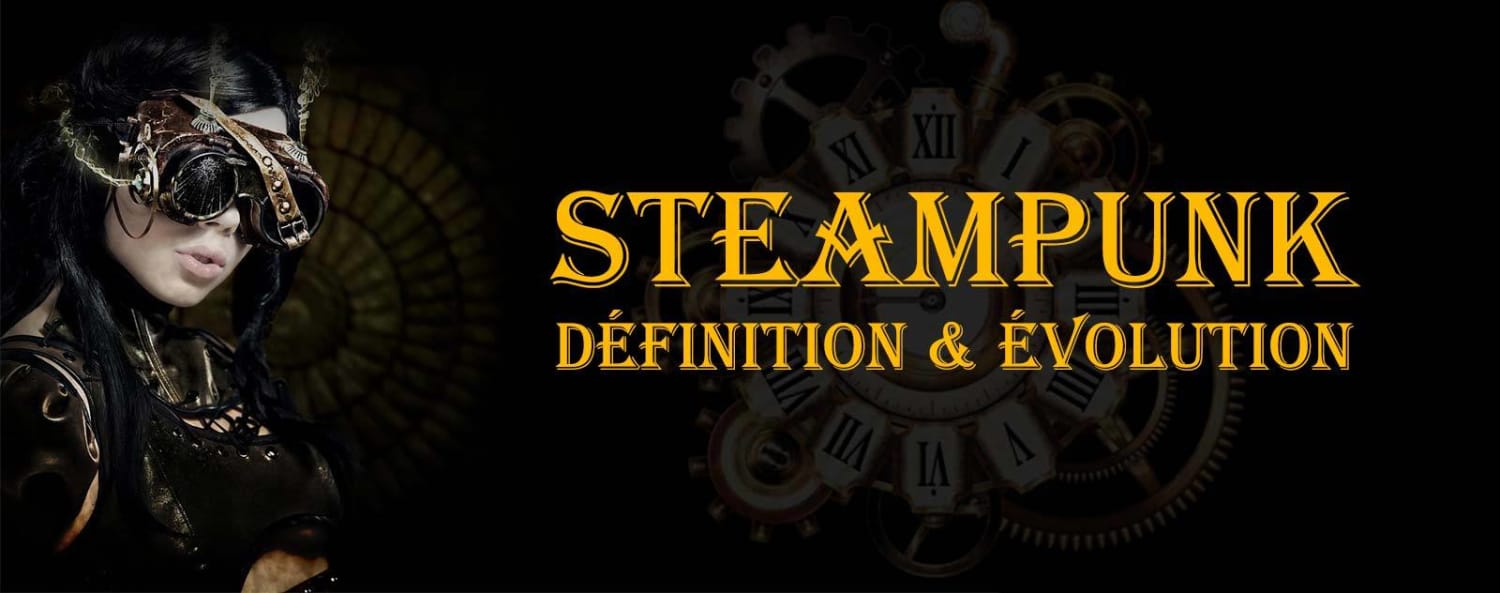
The world of Cyberpunk is rich, complex and full of mystery. It combines science fiction, futurism and a sometimes dark vision of our society. But what is the Cyberpunk Style ? What are its fundamental themes? How does it manifest itself in literature, film, television and video games? This article offers an insightful look into this fascinating universe.
We will not only talk about the Cyberpunk 2020 role-playing game from which the CD Projekt Red video game comes, but about the movement as a whole. Each part too dense to be covered here will have its own article to cover the entire theme.
A Clear Look at Cyberpunk

Definition of Cyberpunk
The term "Cyberpunk" is a widely used, but often misunderstood concept. Essentially, Cyberpunk is a subgenre of science fiction that combines cutting-edge technology with a dystopian atmosphere. The term itself is an amalgamation of "cybernetics" and "punk", depicting a clash between high technology and rebellious counterculture.
Origins of Cyberpunk
Cyberpunk originated in the 1980s, and author William Gibson is often credited as one of its pioneers. His short story “Johnny Mnemonic” and novel “Neuromancer” laid the foundation for the aesthetic and themes, in which characters navigate a world saturated by technology while struggling against oppressive systems of power. The word itself was popularized by Bruce Bethke’s 1983 novel “Cyberpunk.”
Historical context of punk uchronies
The emergence of Cyberpunk cannot be separated from its historical and cultural context. During the 1980s, the world was beginning to feel the effects of globalization and the information age, where digital technologies were rapidly transforming society. Concerns about the effects of this rapid transformation were widespread, and the genre was born out of these concerns.
At the same time, the punk movement was gaining popularity, bringing with it a defiant attitude toward authority and a critique of consumerist society. These punk sentiments were reflected in Cyberpunk, with its stories of marginal characters defying powerful corporations and oppressive governments in technologically advanced urban environments.
Cyberpunk Progression: Flesh is Weak
The emergence of Cyberpunk was also influenced by academic theories of the time, notably postmodernism. With its concern for subjectivity, deconstruction, and genre-blending, postmodernism provided a key theoretical framework for writers.
In short, Cyber is the product of a particular era, reflecting the concerns, fears and hopes of a society in the grip of rapid change and growing uncertainty about the future.
The Fundamental Themes of Cyberpunk

Technology and Human Being
The interaction between technology and humans is one of the pillars of Cyberpunk. This is manifested in several ways, including through human-machine fusion and artificial intelligence (AI).
Man-machine fusion
Human-machine fusion is a recurring theme in Cyberpunk, often involving characters with cybernetic modifications and prosthetics, neural implants, or even entirely artificial bodies. These legendary enhancements can grant superhuman abilities, but they also raise questions about identity, humanity, and control over one's own body.
AI and Consciousness
AI is another central theme of Cyberpunk. AI characters can be allies, enemies, or something in between. Writers often explore the implications of AI, including whether a machine can possess consciousness and what that means for our understanding of consciousness itself.
Dystopia and Future Society
The setting of Cyberpunk is usually an undated dystopian future society (perhaps 2077) where powerful corporations dominate, and social inequality is extreme. Cities such as the famous Night City are often depicted as futuristic urban jungles, dominated by neon skyscrapers and labyrinthine slums.
Corporations and social inequalities
Cyberpunk often presents futures where corporations have more power than governments, mega-corporations. Social inequalities are exacerbated, with a wealthy elite and a large mass of poor. These themes reflect concerns about hyper-capitalism, privatization and social injustice. Basically imagine the GAFAM merging to govern entire countries.
Cyberpunk City: Neon and Darkness
The megalopolis is characterized by its neon-noir aesthetic, merging high-tech glamour and urban decay. These cities are often depicted as overcrowded, polluted, and dominated by technology. This urban setting serves as a backdrop for stories of struggle and the fight for survival in an inhuman world.
Cyberpunk in Literature

The Precursors: Gibson, Sterling and others
Cyberpunk literature has been shaped by a number of seminal authors whose works have defined the genre. William Gibson is arguably the most influential among them, with his novel "Neuromancer" considered the founding work of the genre. Another major author, Bruce Sterling, co-wrote with Gibson the novel "The Difference Engine", which introduced the concept of steampunk .
Other notable authors for your reading include Pat Cadigan with “Synners,” an exploration of virtual reality and AI, and Rudy Rucker, whose novels like “Software” have tackled themes of transhumanism and the technological singularity.
Neuromancer
"Neuromancer" is often cited as the novel that defined cyberpunk. The story follows Case, a computer hacker who is hired for a secret mission involving a powerful AI. The novel explores themes like virtual reality, human-machine fusion, and artificial consciousness. Its influence on the genre is immense, from the "neon and darkness" aesthetic to the idea of the "matrix" as a metaphor for digital space.
Snow Crash - The Virtual Samurai
"Snow Crash by Neal Stephenson is another major work in the genre. The book presents a future where corporations rule and cyberspace blends with reality. Its protagonist, Hiro Protagonist, is a pizza delivery boy for the Mafia and a cyberspace samurai. The novel is famous for its exploration of linguistics, mythology, and virtual reality.
Influence and evolution of Cyberpunk in modern literature
Cyberpunk has had a profound influence on modern literature. It has inspired a range of subgenres, from post-cyberpunk to biopunk, and has influenced authors in other genres. Themes, from human-machine fusion to technological dystopia, are now ubiquitous in contemporary fiction.
Additionally, the genre has also evolved to reflect new technological and social realities. Authors like Cory Doctorow in “Little Brother” and Paolo Bacigalupi in “The Water Will Come” have used the cyber framework to explore the implications of digital surveillance, climate change, and the environmental crisis.
Cyberpunk in Cinema and Television

Classic Cyberpunk Movies
Cyber has also made its mark on the silver screen, with the release of films that have captured the public's imagination and influenced many other media.
The Best Cyberpunk Movies You Absolutely Must See
Blade Runner" and its dark vision close to the thriller
Ridley Scott's " Blade Runner ," based on the short story " Do Androids Dream of Electric Sheep? " by Philip K. Dick, is often cited as the genre's defining film. With its neon-noir aesthetic and dystopian mood, it created an influential vision of the future. The film also raises profound questions about humanity and identity through its exploration of "replicants," synthetic beings indistinguishable from humans.
Matrix" and virtual reality
The Wachowski sisters' "Matrix" revolutionized cinema with its blend of action, philosophy and virtual reality. The film explores the idea of a world as if entirely simulated, raising questions about the nature of reality and freedom. "Matrix" also popularized cyber and punk aesthetic elements, such as black leather suits and round sunglasses.
Cyberpunk TV Series and Adaptations
Television has also embraced Cyberpunk, with innovative series and adaptations of literary works.
1. “Altered Carbon” and digital immortality
“Altered Carbon,” based on the novel by Richard K. Morgan, presents a future where consciousness can be stored digitally and transferred between bodies. The series explores the implications of this “digital immortality,” including inequality, dehumanization and loss of identity.
Ghost in the Shell: Anime and Transhumanist Philosophy
“Ghost in the Shell,” an influential anime franchise, blends action, philosophy, and a distinct Japanese cyber aesthetic. The content explores themes such as AI, human-machine fusion, and cybernetics through the story of Motoko Kusanagi, a cyborg working for a public security agency.
Night city in video games

Impact of Cyberpunk on Game Design
Cyber has had a profound influence on the world of video games, both in terms of aesthetics and gameplay. Games in the genre are often distinguished by their dark, dystopian atmosphere, detailed urban environments where one can visit the city of the future, and their mix of advanced technology and social decay. In terms of gameplay, many games offer storylines rich in choice and consequence, reflecting the themes of freedom and rebellion against authority that are central to the genre.
Iconic games of the Cyberpunk genre
Deus Ex
"Deus Ex" is one of the most famous games of its kind on PC. The game combines elements of RPG and first-person shooter, and offers a high level of freedom of choice to players. "Deus Ex" explores many Cyberpunk themes, such as conspiracy, surveillance, and human-machine fusion, while offering a hard-hitting social critique.
Cyberpunk 2077 and the future Phantom Liberty, role-playing game from the studio CD Projekt Red
"Cyberpunk 2077", often unplayable at launch and well known for its disastrous development, has been fixed update after update. This is another important title in the field of video games on ps4, ps5 or pc. Based on the tabletop role-playing game Cyberpunk 2020 , the game offers a vast and detailed open world of night city, memorable characters and a multitude of gameplay choices, action and adventure are well balanced.
It deals with themes such as inequality, mega corporations and identity, while providing an impressive visual representation of the Night City.
Announcement: an expansion to the CD Projekt Red game called Phantom Liberty is planned and will be presented at the Summer Game Fest in June 2023. The Cyberpunk 2077 game seems to be slowly regaining the approval of players with this DLC which seems to be qualitative.
Cyberpunk in Music and Art

The Sounds of Cyber: Synthwave and Beyond
Music played a key role in shaping the atmosphere of Cyberpunk. The synthwave genre, also known as retrowave, is closely associated with the futuristic style. Characterized by nostalgic 80s synth sounds and futuristic aesthetics, synthwave captures the neon-noir vibe of a crime novel.
Beyond synthwave, other musical genres such as darkwave, industrial, and EBM have also influenced the sonic ambiance of Cyber. These genres share an interest in dark themes, electronic sounds, and mechanical rhythms, reflecting the dystopian and technological atmosphere.
Cyberpunk Aesthetics: Between Digital Art and Street Art
An art that is distinguished by its blend of high-tech futurism and urban decay. Digital art plays a major role in the return of the Cyberpunk aesthetic, with works that use computer images to create futuristic cityscapes, cybernetic characters and virtual reality scenes.
In parallel, street art is another artistic medium closely related to Cyber. Graffiti, stickers and posters are used to express themes of rebellion and resistance, reflecting the anti-authoritarian attitude of punk.
Finally, Cyber and punk art is also present in fashion design, with creations that mix futurism, military influences and post-apocalyptic aesthetics.
Cyberpunk Fashion
Cyberpunk fashion is a tangible manifestation of the genre's aesthetics and values as it is displayed in night city. It embodies the interaction between man and technology, past and future, elegance and decadence.
This fashion draws inspiration from a variety of sources. It incorporates elements of punk, goth, military, and streetwear, while also incorporating futuristic and technological influences. Cyberpunk clothing is often black, gray, or metallic in color, with bright accents, evoking the neon-on-concrete imagery commonly found in urban landscapes with their sprawling firms and buildings.
Cyberpunk Criticism

The Limitations of Gender
Despite its influence and popularity, cyberpunk is not without its critics. Some of the genre's often-cited limitations include, for example, a limited representation of diversity and non-Western perspective, a tendency to glorify the aesthetics of decadence without adequately examining its systemic causes, and a fascination with technology that can sometimes overshadow deeper reflection on its societal and ethical implications.
Post-Cyber: A Response to Critics
In response to these criticisms, a subgenre known as post-cyberpunk emerged. It shares many themes and aesthetics with the original genre, but it differs in its approach to these themes. Rather than focusing on misfits and antiheroes, post-cyberpunk tends to feature more ordinary protagonists who work to improve or reform the system from within.
It is also more nuanced in its depiction of technology. Rather than seeing it solely as a force for oppression or liberation, post-cyberpunk recognizes that technology can have a range of consequences, both good and bad, and is often deeply integrated into everyday life.
Future of Cyberpunk

Current Trends in Cyberpunk Culture
Cyber continues to evolve and adapt to our ever-changing world. Currently, we are seeing a convergence of its culture with other subcultures and trends, such as vaporwave and the maker movement. Additionally, Cyberpunk continues to influence and blend with other genres, such as steampunk, biopunk, and solarpunk.
The world of emerging technologies, such as virtual reality, artificial intelligence, and transhumanism, is also fertile ground for exploration. These technologies raise questions about identity, reality, and the relationship between man and machine, themes at the heart of the Cyberpunk genre.
Future Possibilities of the Cyberpunk Genre
Looking to the future, the potential of Cyberpunk seems limitless. As our world becomes more interconnected and technologically advanced, the themes and concerns of the style become increasingly relevant.
It is likely that we will see new forms and expressions of Cyberpunk emerge, reflecting the changes in our society and our relationship with technology. Whether in literature, film, video games, art or music, Cyberpunk will continue to challenge and inspire us, exploring the boundaries of possibility and asking us essential questions about what it means to be human in a world dominated by technology.

Beyond its distinctive aesthetic and fascination with technology, Cyberpunk offers a mirror in which we can envision our potential future. It challenges us to consider the impact of technology on our society and by extension our own humanity, exploring futuristic scenarios that are both strangely distant and disturbingly close to our current reality.

As a genre, Cyberpunk continues to evolve and adapt, reflecting the changes in our world and the new possibilities offered by technology. Whether or not the future resembles Cyber’s dystopian visions, one thing is for sure: it will continue to play a key role in our collective imagination, helping us navigate the uncertain waters of the future.









